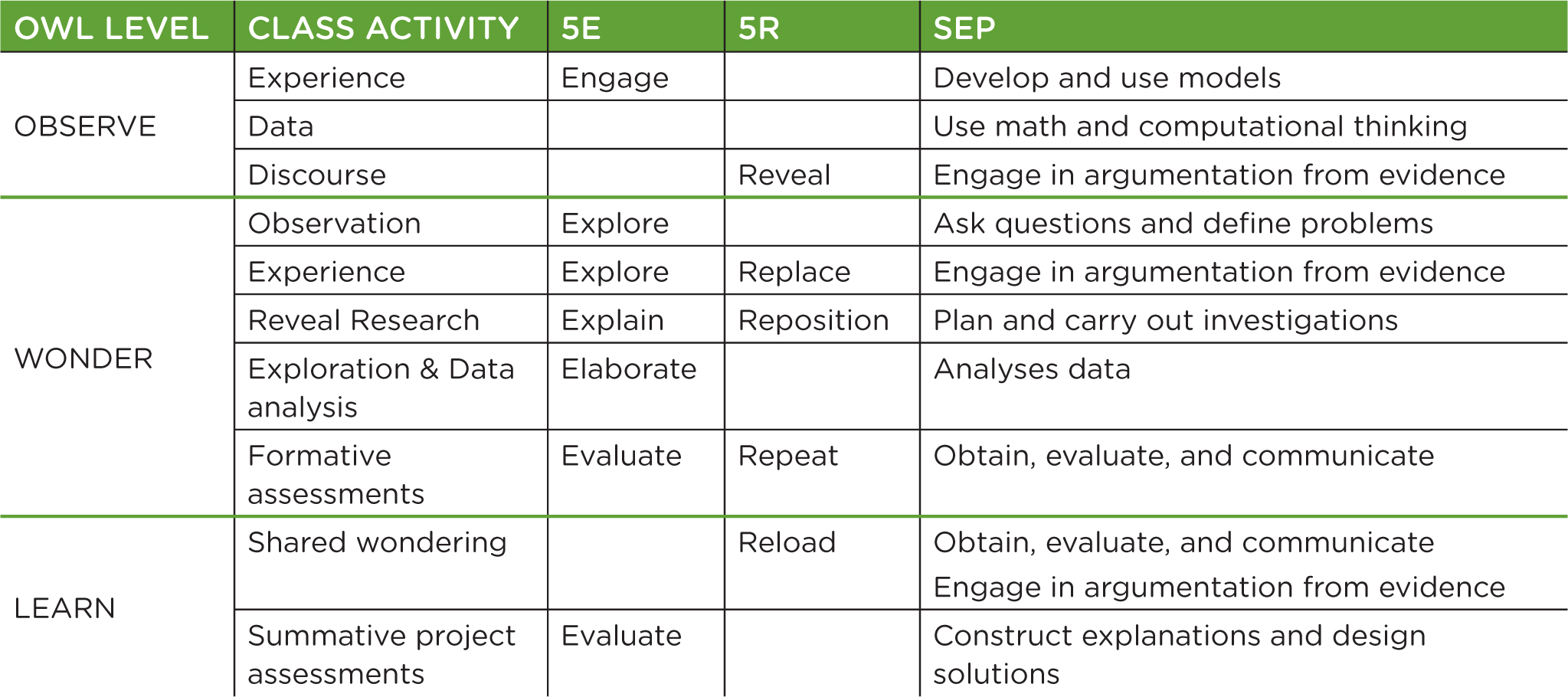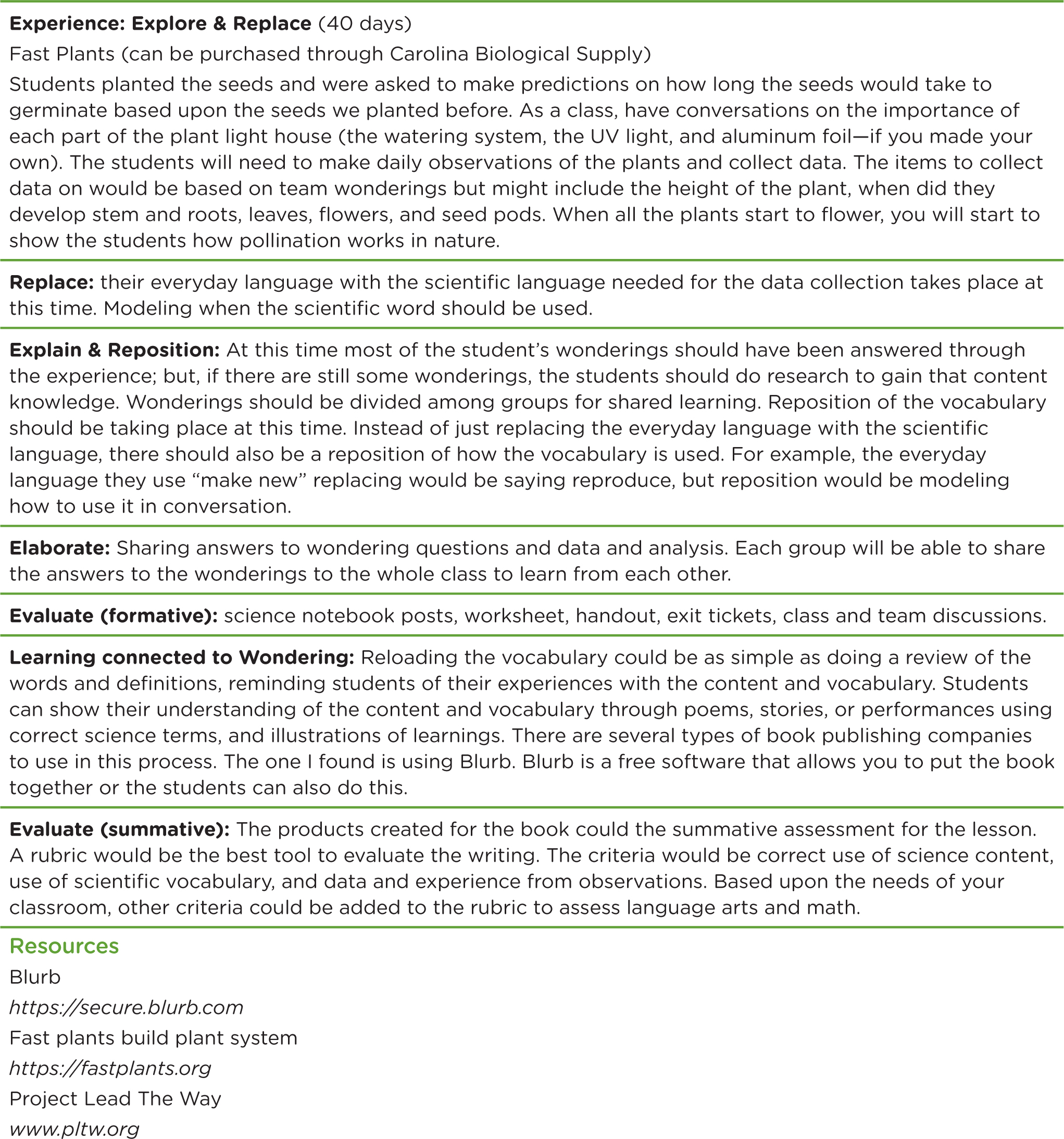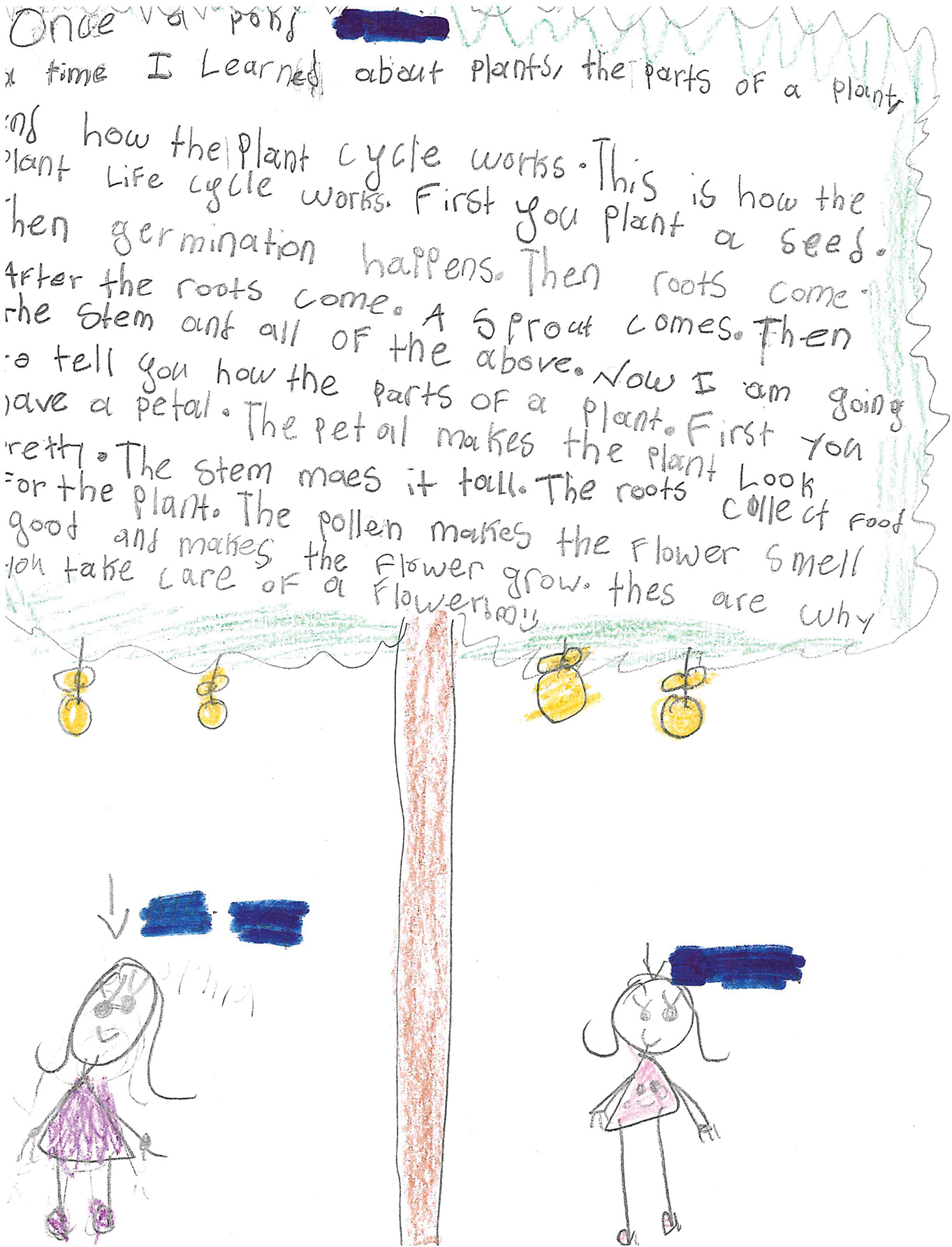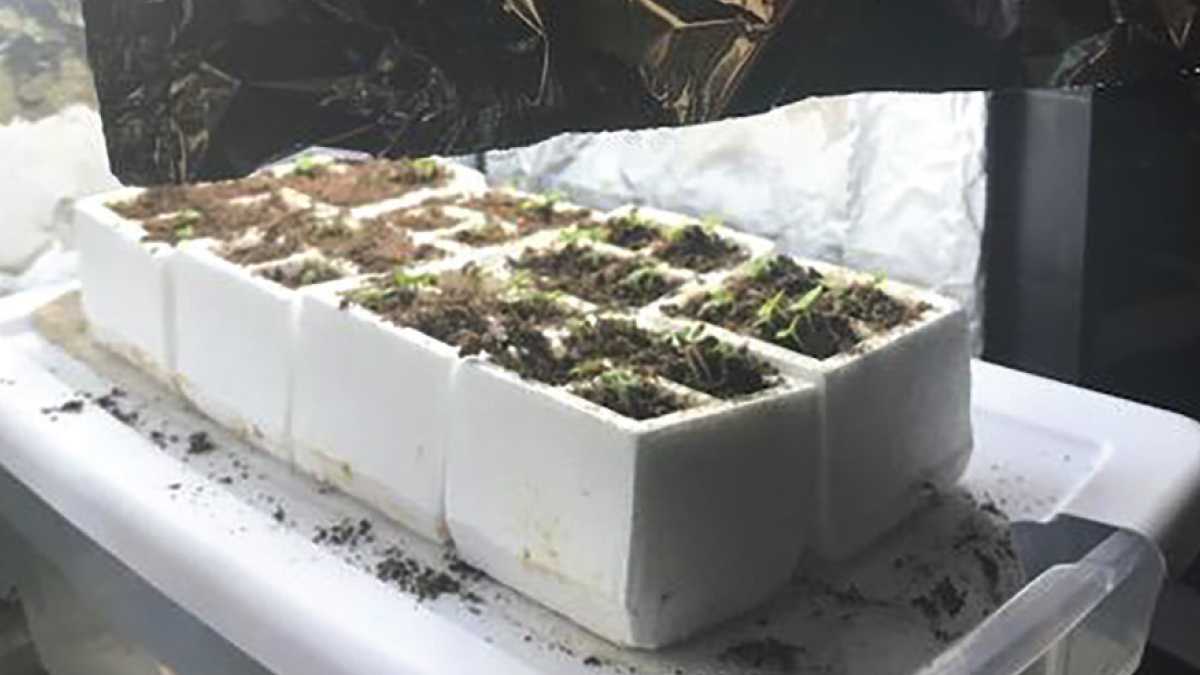An Expanded Observe-Wonder-Learn
Moving Observe-Wonder-Learn From Assessing Prior Knowledge Into a Unit-planning Tool

Discourse is the group discussion. The format is open: whole-group, four corners, team reviews, peer editing, and so on. What are the ideas that come from the data and discussions among the groups? What are the key ideas that are needed to move into the wondering for the next phase? What discourse strategy supports this group of learners at this time? Is this the time for a debate, a project report, or gallery walk? There are many options.
Wonder may comprise several cycles of observing/wondering in a variety of ways before moving onto the learning stage of the unit. Wonderings enable the crafting and directing of the rest of the unit.
Observation is the phase of asking, now that you have data, what do you still wonder? Why are there still questions? What is next?
Experience will produce the wonderings for the larger unit. No data is required at this time. Movies, videos, guest speakers, animations, simulations, and data sets all can be the source of the wondering experience. These experiences need to be linked to the direction the previous discourse was moving toward. The included lesson plan may help clarify the way these connections might build (Figure 2).

Reveal Research is the design phase of the student-directed research project. (Grade level and student development will determine the amount of free exploration in the next stage.) Science investigation and engineering skills are highlighted in this step. They may be taught for the first time, modelled, reviewed, or just expected. Focus on the depth necessary for this group of learners. Differentiation will be a key component to student success.
Data Analysis is the actual student exploration of the selected wondering/phenomenon data. This is the mathematical thinking and data organization piece of NGSS. Again, differentiation will be a hallmark of a successful unit. Role-playing, modelling, samples, and rubrics are needed to provide structure for early units. Procedure and process reviews and anchor charts will be enough for later units, and student autonomy will be part of a successful concluding unit.
Formative assessments are the checkpoints and redirect stages of the unit. Does the wheel need to return to earlier in the process to support success? What supports need to be added to build student success? Is this the right path for this point in instruction, grade level, developmental stage? Based on formative assessments, what path changes are needed?
Learn is the summative assessment phase of the model.
Shared Wondering is the process of creating the products to demonstrate learnings that will be used as evidence of growth and learning. Teams collaborate to define and refine the evidence necessary to demonstrate learning outcome. Again, this will look different depending on the placement in the sequence of units. Scaffolding, modeling, and collaboration within the whole class will be necessary for early units and more autonomy will demonstrate growth with additional units.
Conclusion
The OWL designed unit was meaningful and engaging for the students. They enjoyed being able to observe, and wonder more about their observation, and lastly to demonstrate their learning through an engaging creative product. The structured observation provided the gateway to building personal learning. The pinnacle of the unit was the student experience in the wonder stage of the OWL, where the students took charge of their learning. Additionally, the wonderings also provided the teacher insights into the students’ preconceptions, misconceptions, and previous learning gaps. The structured use of questions and language to convey their students’ thoughts served to guide additional instruction and topics for future study.
The end of unit assessment demonstrated student growth. The students were able to express their learning creatively through writing about their experience (Figure 4). The students had open choice on the structure of the poems or stories but were given a rubric (see NSTA Connection) to make sure they demonstrated their learning. The products were compiled into a class book. We used Blurb to publish our books, but any student book publishing company would work. Overall, high-achieving as well as struggling learners were actively engaged and took responsibility for their learning and expressed interest in what would be their next task. We plan to build a research basis of the effectiveness of the complete design as more lessons are developed and taught.

Inquiry Pedagogy Teaching Strategies Three-Dimensional Learning Elementary



